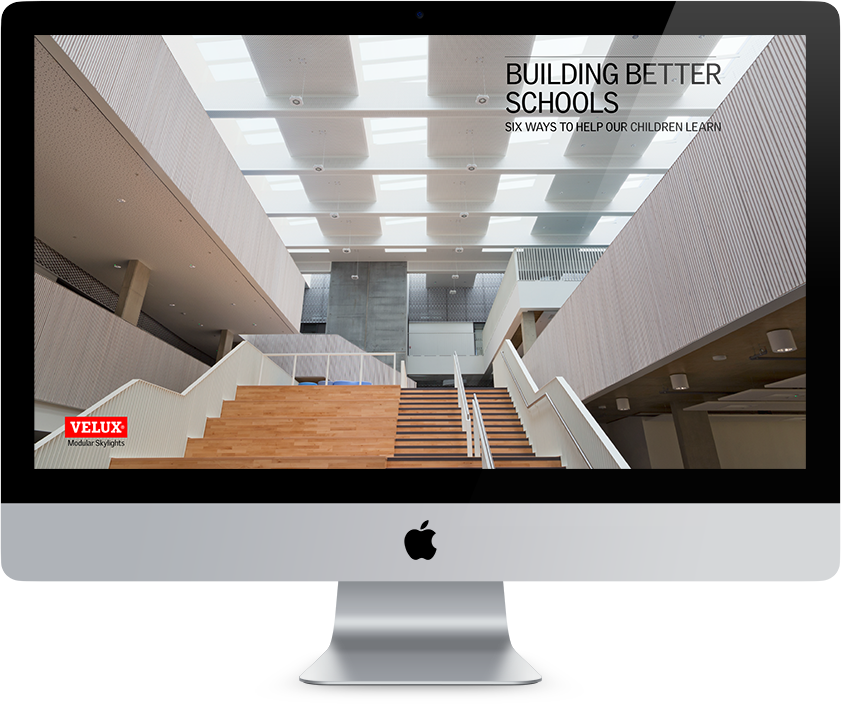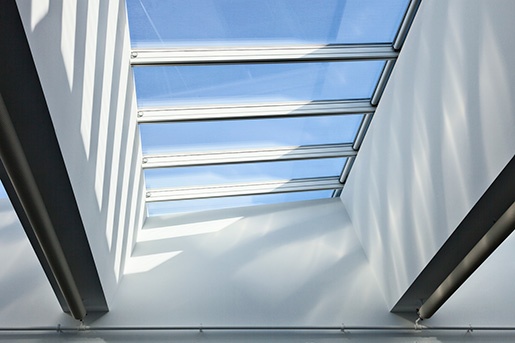Een belangrijke functie van een gebouw is het buitenhouden van ongewenste geluiden. Geluidsisolatie is een belangrijke parameter voor bouwcomponenten, aangezien lawaai van buitenaf een negatieve invloed kan hebben op gezondheid, stemming en leervermogen.
Onze perceptie speelt een belangrijke rol als we vaststellen of er sprake is van geluid (positief) of lawaai (negatief). Ongewenste geluiden zijn vervelend, irritant en in ernstige gevallen zelfs schadelijk1. Een prettige auditieve waarneming en de afwezigheid van indringende achtergrondgeluiden zijn in klaslokalen van groot belang voor een goede onderlinge communicatie en een goed concentratievermogen.
Bij het ontwerpen van klaslokalen is het belangrijk om optimale omstandigheden te creëren voor het produceren en ontvangen van aangename geluiden (zoals leraar en leerlingen die tegen elkaar praten) en het blokkeren van indringende geluiden (zoals geluiden van speelplein en verkeer).
Twee onderzoeken, door Crandell en Smaldino (2000)2 en Picard en Bradley (2001)3, hebben de bevindingen van verschillende eerdere onderzoeken samengevat. De conclusie was dat de akoestische omgeving van een klaslokaal een cruciale factor is voor de academische en psychosociale prestaties van kinderen. Het Clever Classrooms-rapport (2015)4 benadrukte dat dit in het bijzonder geldt voor kinderen met speciale onderwijsbehoeften.
Cruciale factoren die de akoestische omgeving van klaslokalen verbeteren, zijn bijvoorbeeld:
Controle over externe geluiden
Klaslokalen die niet in de buurt liggen van drukke omgevingen, zoals speelpleinen en ontvangstruimtes, hebben minder last van externe geluiden. Soms kunnen ruimtes als gangen, toiletten en opslagruimtes fungeren als bufferzones tegen externe geluiden.
Idealiter staat een school niet aan een drukke weg. Als een school toch langs of vlakbij een drukke weg staat, kan het verkeerslawaai worden verminderd door de klaslokalen zo ver mogelijk van de weg te situeren, niet op de weg uit te laten kijken en geluidsmuren met beplanting te gebruiken als buffer. Het wordt dan wel een uitdaging om het geluid buiten te houden zonder het daglicht, de ventilatie of het uitzicht naar buiten te veel te beperken.
Een populaire oplossing voor deze uitdaging is het gebruik van zelfregulerende lichtstraten, die tijdens de pauzes opengaan. Op die manier wordt er geventileerd en blijft de temperatuur op peil, zonder dat er tijdens de lessen geluidsoverlast is.
Vensters met dubbel glas van verschillende diktes (bijv. 4 mm en 6 mm) hebben een betere geluidsisolatie dan vensters met standaardbeglazing. Vensters met triple glas van verschillende diktes en met verschillende afstanden tussen de lagen presteren ook beter dan de standaardoplossing. Een andere gasvulling gebruiken is ook effectief: krypton isoleert beter tegen geluid. En tot slot is lamineren ook een manier om beglazing beter geluidsisolerend te maken.
Binnengeluiden
Geluiden die in een gebouw ontstaan, kunnen worden ingedeeld in twee bronnen van overdracht: luchtgeluid en geluid dat door het gebouw zelf wordt overgebracht. Luchtgeluid van menselijke activiteiten in aangrenzende klaslokalen of mechanische geluid verplaatst zich via de lucht, muren, vloeren en plafonds.
Binnen het klaslokaal kunnen ongewenste geluiden worden verminderd door middel van een verlaagd plafond met akoestische tegels, tafels en stoelen met rubberen pootjes en, indien nodig, akoestische panelen. Poreuze materialen kunnen ook worden gebruikt om geluiden te absorberen. Gordijnen kunnen de akoestiek verbeteren doordat ze echo's en galm dempen.
Vorm van de ruimte
De stoelen moeten zodanig in de ruimte worden geplaatst dat de leerlingen de leraar goed kunnen horen. Hoe dichterbij, hoe beter. Een rechthoekige ruimte met een grotere lengte-breedteverhouding is het meest geschikt voor zo'n indeling.
Dit wil niet zeggen dat alleen rechthoekige ruimtes de juiste akoestiek opleveren. Zoals we in hoofdstuk 5 en 6 van het e-book "Gezondere scholen bouwen: zes manieren om onze kinderen beter te laten leren", zullen bespreken, is flexibiliteit een van de essentiële factoren bij het ontwerpen van een klaslokaal.
Door een goede akoestische omgeving in een klaslokaal kunnen de leerlingen de leraar goed verstaan en worden ze minder afgeleid door externe geluiden. Een goede akoestische omgeving zorgt er ook voor dat leerlingen effectief kunnen samenwerken in groepen. Daarnaast kunnen ze zich voldoende concentreren op zelfstandig werken of examens.
Bronnen
- https://www.velux.com/deic/acoustics/noise-or-sound
- Crandell and Smaldino: Classroom Acoustics for Children With Normal Hearing and With Hearing Impairment, 2000
- Picard and Bradley: Revisiting speech interference in classrooms. 2001
- Clever Classrooms, Summary report of the HEAD project, University of Salford, Manchester (2015)

.svg)





